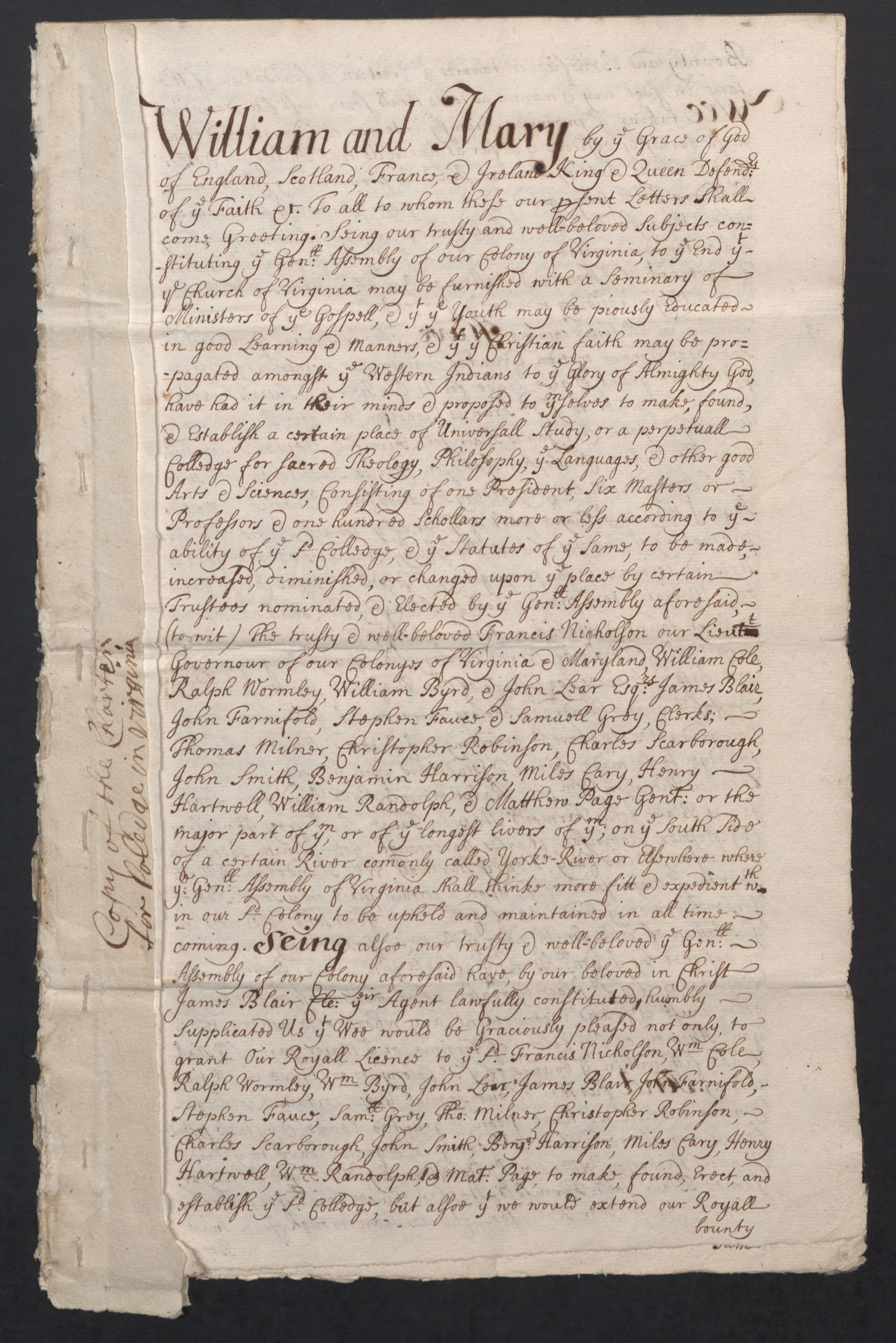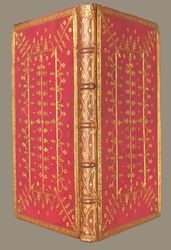On February 8, 1693, the Royal Charter establishing the College of William & Mary in Virginia was written. William & Mary President James Blair brought both English and Latin versions of the twelve page document with him from the Court of William & Mary at Kensington Palace. The original copy of the charter establishing the College was lost about the time of the American Revolution. The most complete story of the Royal Charter is found in English professor Frank B. Evans’ monograph on the subject, published by the Botetourt Bibliographical Society in 1978. Professor Evans began his article with the statement: “The story of the royal Charter granted in 1693 to found the College of William and Mary would be simpler, but less interesting, were it not for the story of a document which is lost.”
The first contemporary copy acquired was discovered in a trunk in an attic at Harvard University and was given to William & Mary in 1931. Originally, it was a splendid copy of the document, however, it was badly water damaged at some point before it was given to William & Mary and is in need of conservation.
A second contemporary manuscript copy, thought to have belonged to Sir Edmund Andros (the royal governor of the colony of Virginia at the time of the founding of William & Mary) was purchased at auction in 1977. Professor Evans speculated that perhaps Ralph Wormeley, Secretary of the colony of Virginia, made this translation from Latin into English for Governor Andros. The image of its first page is used on Charter Day programs, publications, websites, etc.
 First page of the Charter
First page of the Charter
The only mention of the disappearance of the original charter is an extract from the Proceedings of the Faculty for March 28, 1791. This extract was written by professor of history, Robert J. Morrison, who taught at the College from 1858-1861. The original minutes no longer exist. The extract, which is held in manuscript form at the Library of Virginia, reads as follows:
“The Society being informed by M. Bellini that the original charter of this College which is lost, was some years past seen by him in the possession of a certain Karjavina, a native of Muscovy, who declared that it was his intention to deposit the same among the archives of St. Petersburg in Russia. Resolved etc.”
Professor Evans followed his monograph on the Royal Charter with another on the relationship between Carlo Bellini, Professor of Modern Languages, and the shadowy figure of “Karjavina” who was actually Fedor Vasil’ evich Karzhavin, a Russian trader who was in Williamsburg in 1779-1780 and again in 1785-1787.
It is not known if Fedor Karzhavin took the original charter with him, but it is known that it is not in the Karzhavin papers at the Archives in St. Petersburg. There is some speculation that Bellini himself might have taken the Charter or lost track of it.
The annual celebration of Charter Day is primarily a twentieth century development, initiated by President John Stewart Bryan in 1937. Previously, Transfer Day was celebrated on August 15th. It commemorated the official transfer of the charter to the College of William & Mary and its presentation to President James Blair and the faculty on August 15, 1729.
If you are interested in reading a transcription of the Charter, please go here.
While not the first printing of the original College of William & Mary charter, the 1736 edition by William Parks of Williamsburg is the best known. The copy in the Special Collections Research Center is bound in red morocco and gold tooled in Scottish herringbone by an unknown Scottish bookbinder in Parks’ shop. It is one of three known copies. Parks, Williamsburg’s first public printer, hoped to gain favor with the College faculty by printing the Charter. It was received as a gift from Charles H. Taylor in 1932.
 William Parks printed edition, 1736
William Parks printed edition, 1736
Both the manuscript and printed edition of the W&M Charter will be on display Charter Day, February 9th, in the main lobby of Swem Library. The printed edition and a facsimile of the manuscript will be on display through the weekend. If you’re not able to visit in person, the Charter has been digitized.